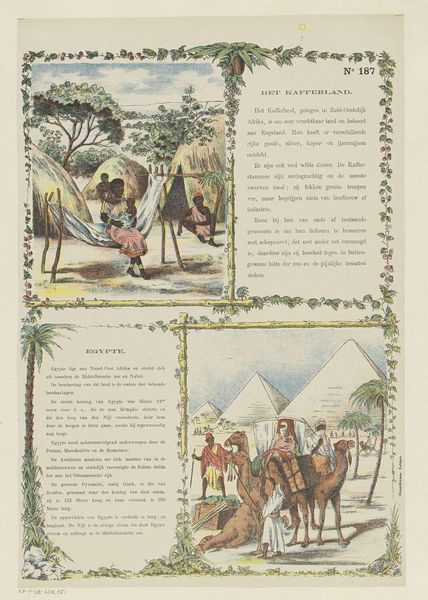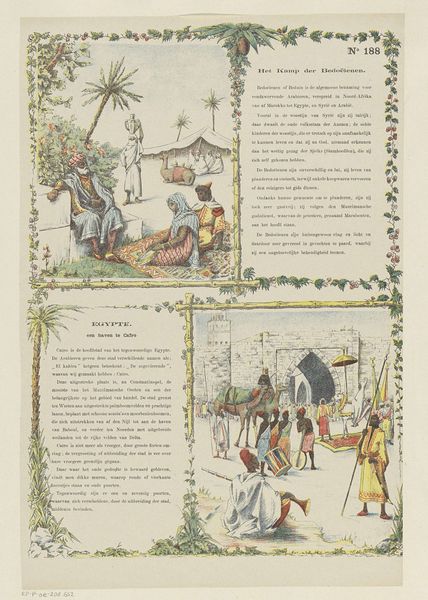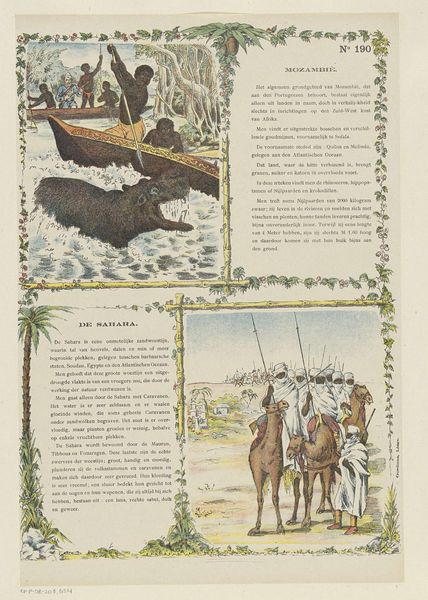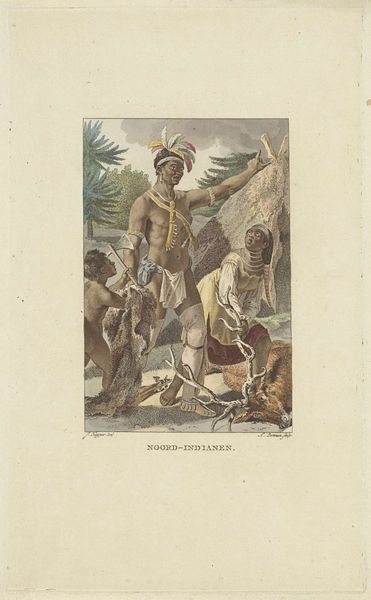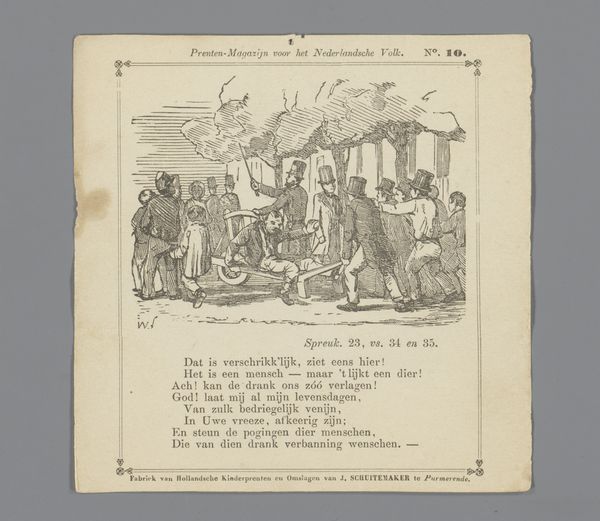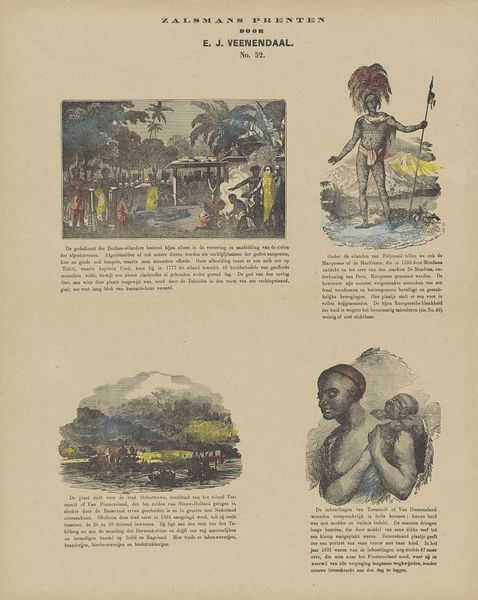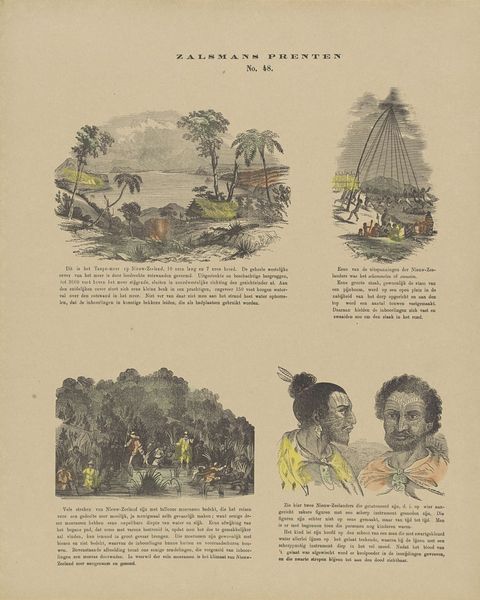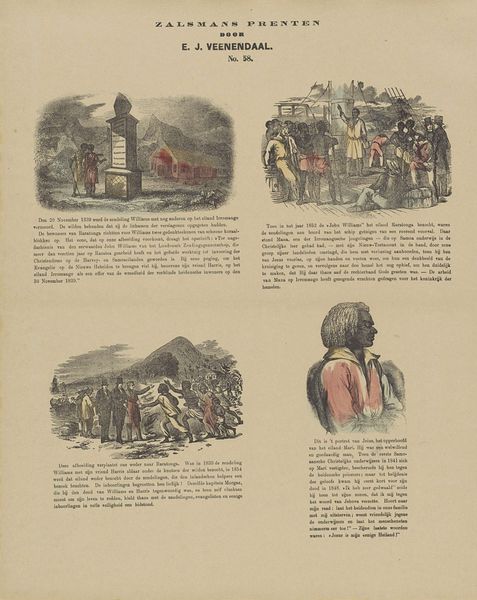
#
narrative-art
# print
Dimensions: height 399 mm, width 271 mm
Copyright: Rijks Museum: Open Domain
Curator: What strikes me first is how neatly this print is divided. Its composition—with Christopher Columbus taking center stage in the upper register and a view of life in Sengambia occupying the lower register—demonstrates an artist thinking in terms of formal balance and mirroring. Editor: That's an interesting reading, especially considering the work is titled “Amerika. Ontdekt door Christoffel Columbus." Columbus looms large, doesn’t he? Almost comically so. There's an undeniable arrogance communicated through his stance and that bold flag he plants. What’s the date on this print? Curator: While the dates for its creation are documented as between 1894 and 1959, its earlier aesthetic harks back to an almost medieval, or at least pre-modern, flatness of space and form. The lines are crisp and unyielding. Editor: Knowing that, it feels charged with the politics of its era—the colonial gaze romanticizing this "discovery" while simultaneously juxtaposing it with an equally stereotyped depiction of Senegalese life. It’s a jarring exercise in power dynamics. Look at how the Indigenous people are presented almost as a welcoming committee! The framing is far from neutral. Curator: Perhaps. But I am curious about the ornamental vine border that encircles the composition; there is an integration of distinctly non-Western organic forms at play there. Editor: True, it creates a decorative effect. However, it almost seems to contain the scenes within—as if reinforcing a specific, controlled narrative for viewers of the time. There's an element of staged exoticism here that's hard to ignore, particularly regarding these portrayals of "America" and "Senegambia." It serves, ultimately, as visual propaganda. Curator: I see what you mean. Despite the appealing clarity and balance, understanding the historical context certainly exposes the work's latent ideologies. Editor: Precisely. Recognizing the "where" and "when" helps unlock so much more than merely analyzing brushstrokes or, in this case, the printmaking technique. Curator: Fair enough. Looking at this from both a formalist and activist angle does give it so much more dimension. Editor: Exactly! It highlights how intertwined art always is with history and power.
Comments
No comments
Be the first to comment and join the conversation on the ultimate creative platform.
